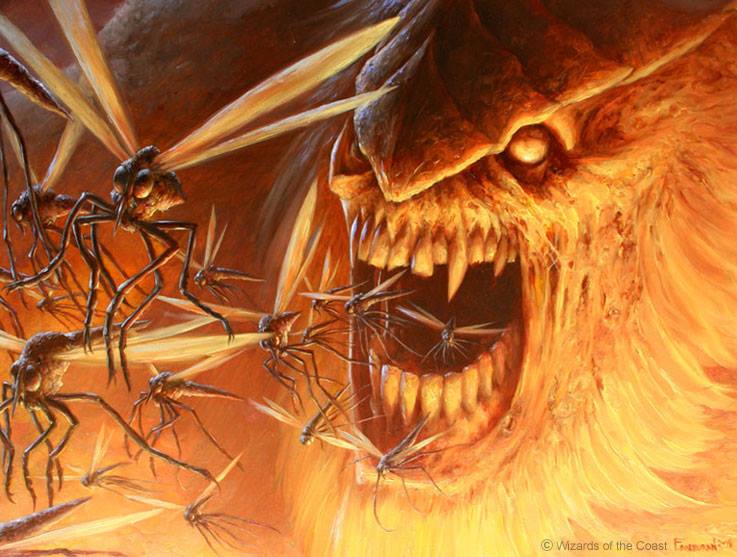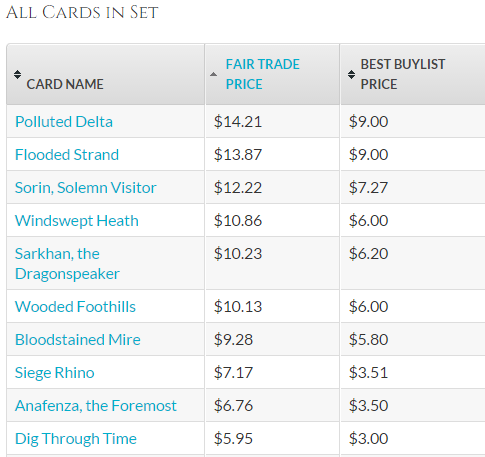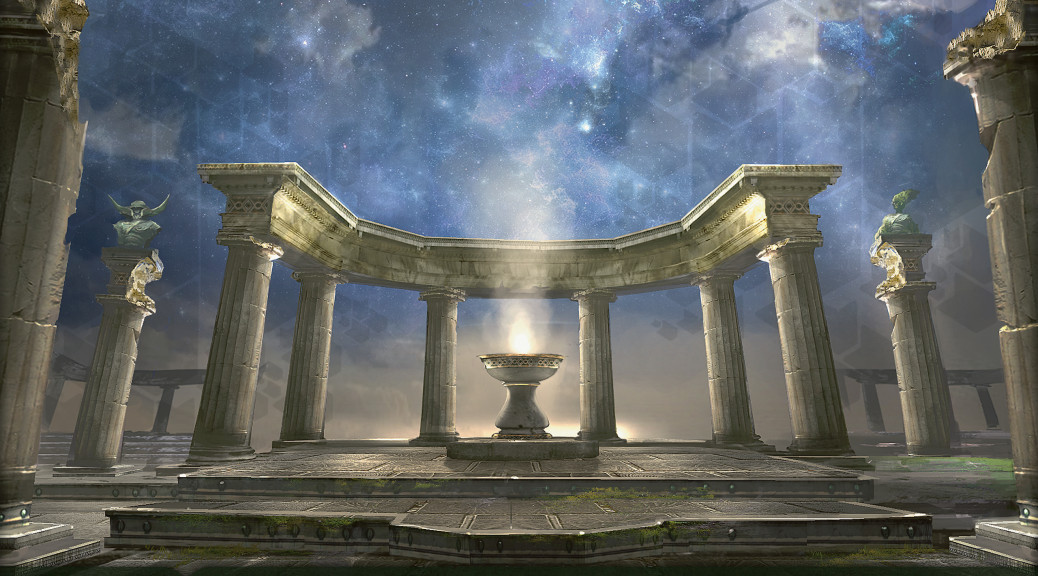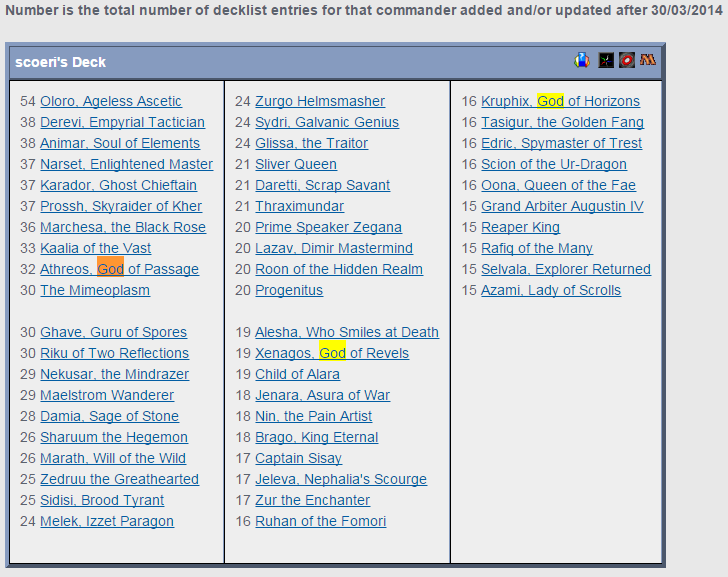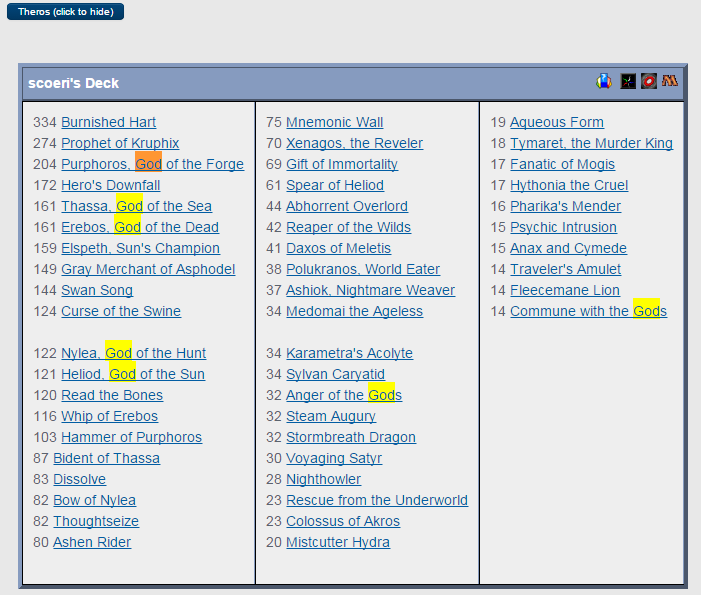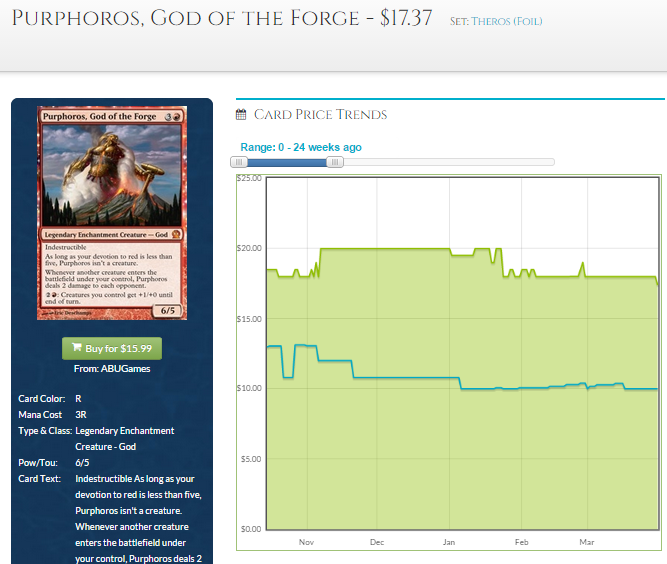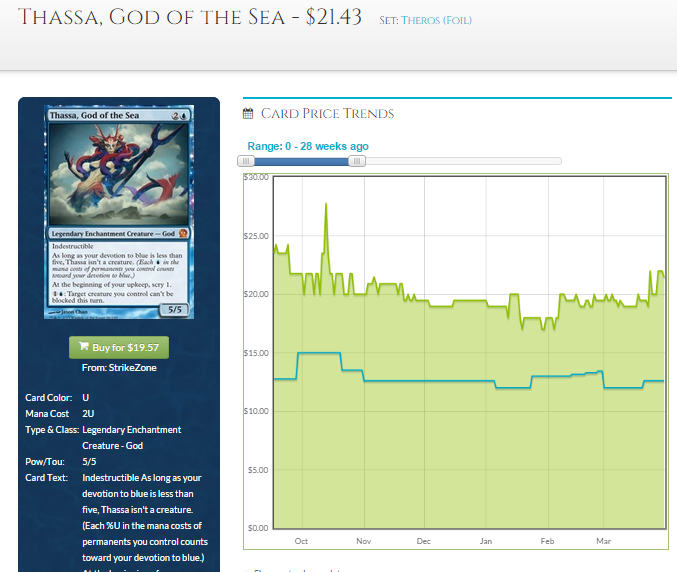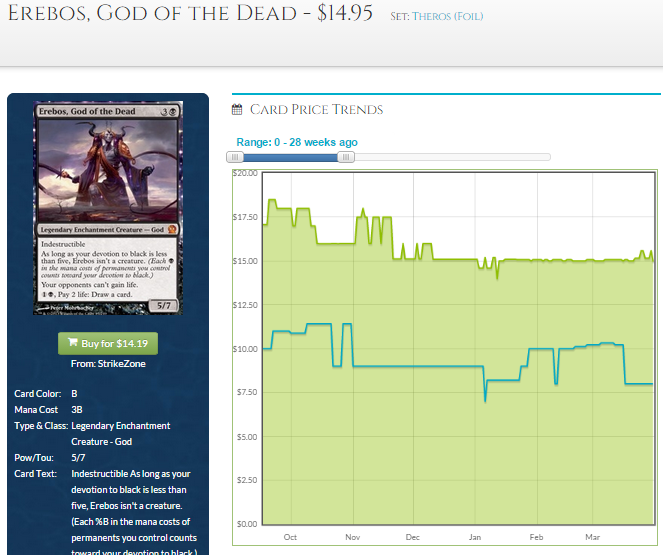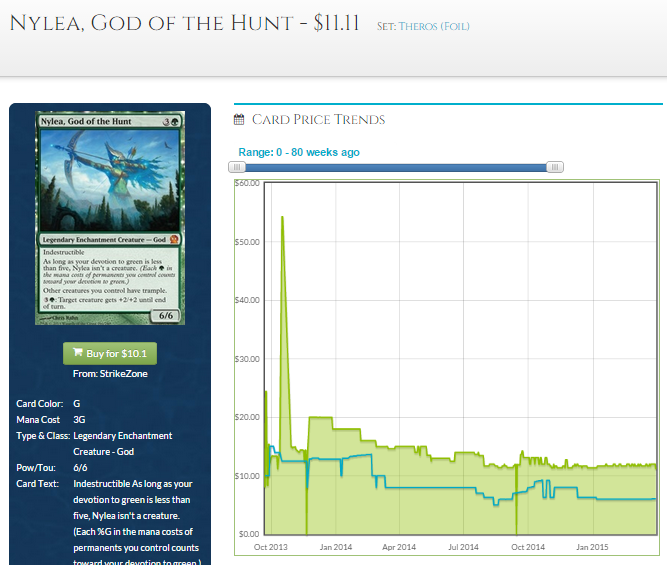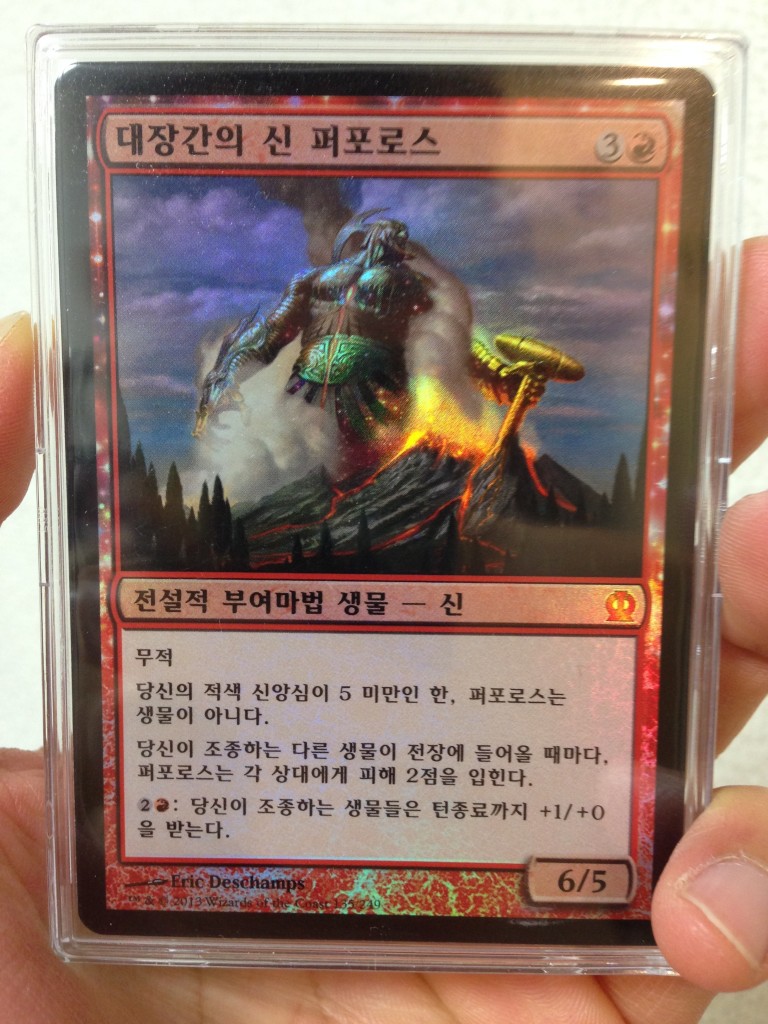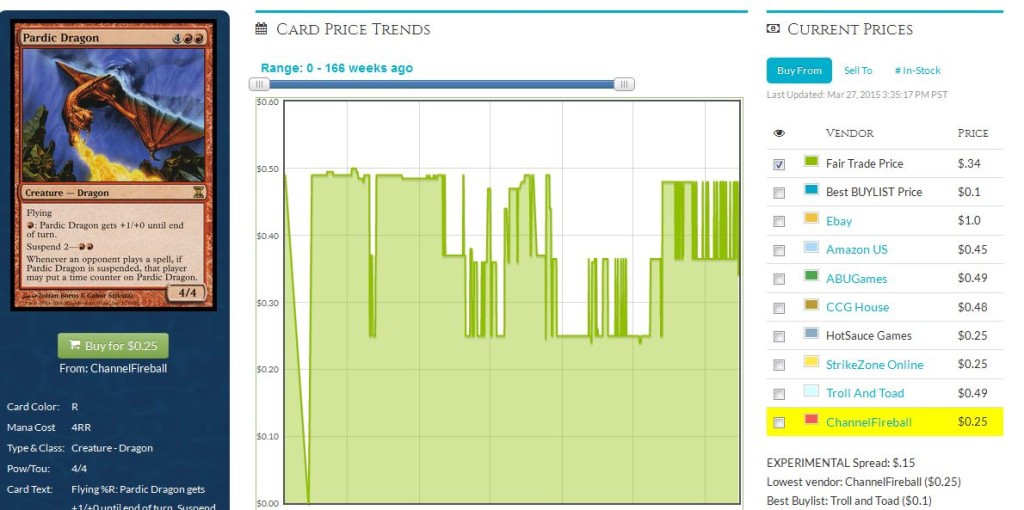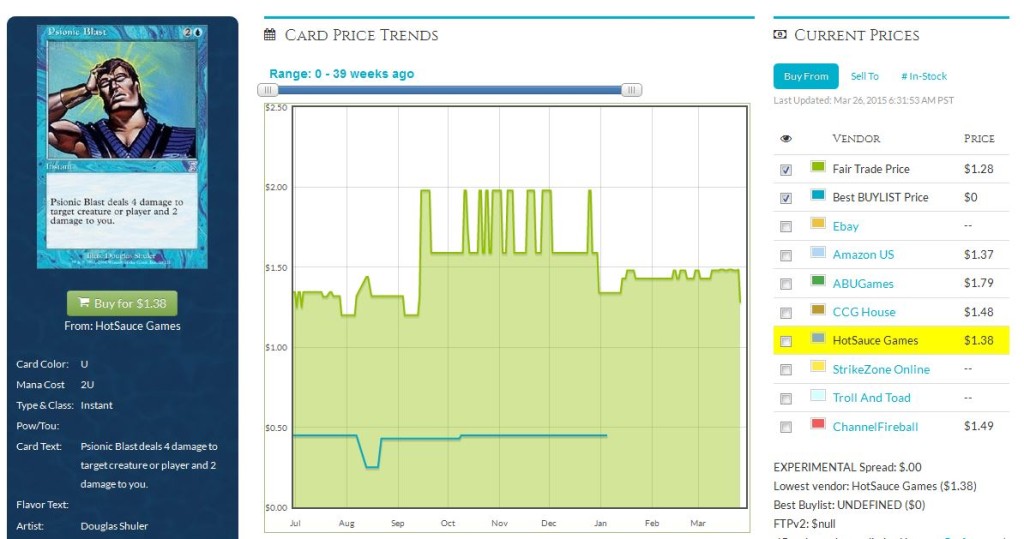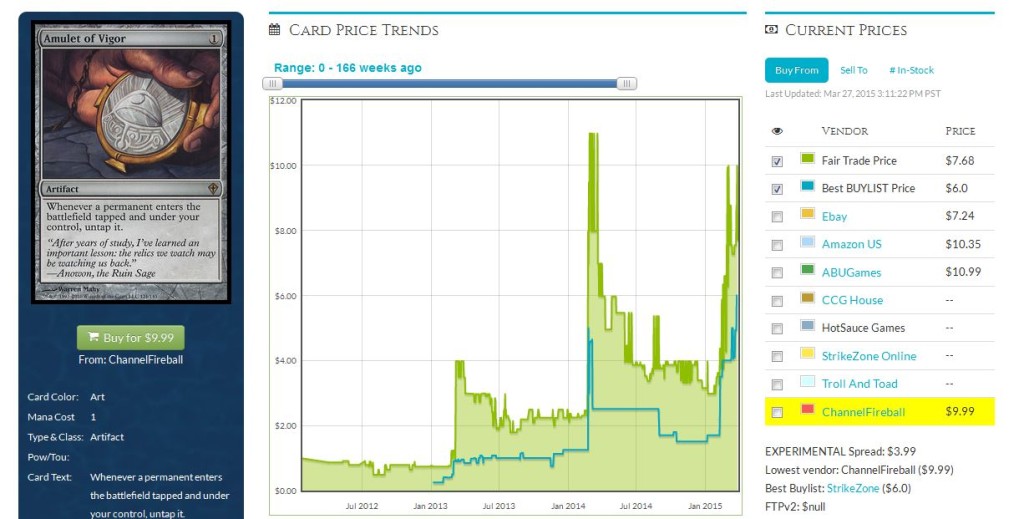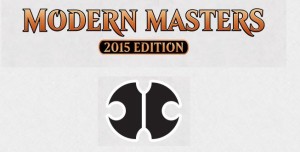By: Travis Allen
Dragons of Tarkir became tournament legal this past Friday, and players jumped into the format with both feet at the SCG invitational. Invitationals are great for spurring players to put effort into building real decks, because the payout is high enough to be worth it. This makes these week-zero events a great barometer of the format ahead of the Pro Tour. While we’re looking at it to see where the money is, you can bet your butt PT competitors are looking closely at the results as well.
I’m not going to talk about Theros cards much, if at all. They’re pretty much all a sinking ship at this point. If you own them, do so because you need to for play purposes. Other than that, if it’s from Theros block and it’s not Thoughtseize, I’d be looking to trade it away.
So what was the big winner this weekend? What new card burst out of the gates and amazed us all with its power? Siege Rhino. Big, dumb, brutally efficient Siege Rhino. Yawn. It put 12 copies, three playsets, into the invitational top eight, and another set in the open top eight. We can’t really be surprised at this point. Those stats are hard to argue with. What is surprising, though, is how cheap it still is. I’m looking at MTG Deals, an online store, and I see 89 copies at $4.94 each. $5? Really? For a dominant Standard threat that’s even making medium-sized waves in Modern?
When Khans came out, I wrote about how rares from that set would be suppressed. With fetches in the set soaking up big value, it’s tough for other rares to break through. We would expect the few big competitive mythics to take a small hit in value but remain the most expensive cards in the set, while the rest of the rares fall off fast. When we look at Khans though, that’s not what we’re seeing:
Our first mythic is three slots down, behind two fetches. In fact, of the top eight cards, only two are mythic. It turns out that Khans doesn’t have much in the way of big, playable mythics. Between the two Standard top eights this weekend, there were only six Sorins, four Wingmate Rocs, and I don’t even know how many Sarkhans. There were so few that I didn’t even bother to write it down. It turns out that all of the playability in Khans of Tarkir is in the rares, not the mythics. This is a big shift, too. Take a look at leaders of Fate Reforged and Theros right now:
Seven of the top eight cards in Fate Reforged are mythic, and Theros is similarly quite mythic-heavy at the top.
Okay, so what do we do with this information? What it tells me is that all the most playable cards in Khans of Tarkir are rare, not mythic. If mythics are highly competitive cards, it should be no problem for them to hold the highest value slots in a set. With their much-limited availability, it’s much easier for their prices to hold closer to or above $20. The fact that this isn’t happening means the KTK mythics are just unexciting on the competitive scene, which is what drives Standard prices. If the mythics aren’t that good, then we should be buying rares. And what’s the non-land rare that saw the most play this past weekend? Siege Rhino, whose $5 price tag is looking very odd right about now. This is an excellent number to be jumping in at. All I can imagine looking at that price is sitting there in November looking at $15 Rhinos and thinking, “Man, I can’t believe these were $5 awhile ago.” Even if it doesn’t jump that much, I can’t imagine you lose value picking these up at $5.
Keep in mind that Khans rotates next spring, though, about a year from now, not in the fall of 2016 as we’ve become accustomed to. This will impact how the card prices behave, although we’re not exactly quite sure how yet. Currently, rotating sets begin to see their prices really sag about four to six months ahead of the fall set. That time frame under the new model puts the price drop for cards rotating in the spring right at the fall rotation beforehand. That would mean that just as Theros is rotating and Khans staples should be skyrocketing in the new meta, they would instead be dropping ahead of their spring rotation. It’s very odd. I have a feeling that this first spring rotation is going to creep up on people and prices are going to stay high on KTK cards right until the bitter end.
Alright, we’ve managed to talk about one card so far. What’s next? After Siege Rhino, the next most common rare we’re interested in is Thunderbreak Regent. I liked Regent quite a bit in my set review, although apparently not nearly as much as everyone else. It had climbed to nearly $10 coming into this weekend, and it quite clearly deserved it as the most-played Dragons of Tarkir rare. Be wary though: it’s in an event deck, which will hamper its price somewhat. I don’t like picking up Regents right now, actually. I’d much prefer to wait until the Pro Tour to see if some other cards can pick up steam and knock Regent’s price down a few notches.
Three different cards came in with 10 copies each; Tasigur, Whisperwood Elemental, and Mastery of the Unseen. Tasigur came in across half the decks in the top eight, in fact, but only at two copies per deck. He’s an extremely powerful creature, and it’s clear that everyone that makes black mana wants to be in the Tasigur business. It seems the problem is that his legendary status and hunger for grumper fuel makes it difficult to warrant running more copies. Even at $25, I really like foils, by the way. He is seeing play in both Modern and Legacy, and Fate Reforged isn’t going to have been drafted all that much. $25 for eternal staple foils is too cheap.
Whisperwood Elemental and Mastery of the Unseen showing up at the same rate isn’t too surprising, as they’re best buds. GW Manifest has made its position in the metagame clear, and Deathmist Raptor is a powerful new tool for the deck. Even if the deck holds on at one copy per top eight, I think we see Elemental lose a little bit of steam from its current price of around $15. There are already copies on TCG around $10. $15 was his “wow, this is new and exciting” price. I’d guess $8 to $12 is his “yep, another manifest deck” price. Meanwhile, you don’t still own Mastery of the Unseen, do you?
Just behind those guys is Surrak, Hunt Caller with nine copies in the top eight. That’s a decent showing, and I wonder if perhaps we’re just seeing the beginning of what he can do. He’s got an obvious home in GR aggro types of decks. Can he break out to other strategies, though? His ability to give any of the dragons haste is quite spicy, and with Battle for Zendikar on the horizon, he may be hasting up Eldrazi this fall. At $5 a copy, I don’t dislike trading for him here. He’s shown that he’s good enough to run in the big leagues, and while we could see a small dip in price, you don’t have much to lose getting in now. Be aware though, he’s in the same event deck as Thunderbreak Regent.
What surprised me most in the other direction is Dragonlord Ojutai. During the first few rounds of Standard on Saturday, I saw a lot of Ojutai, and even tweeted that it was a good pickup with all the camera time it was getting. It ended up doubling up over the weekend, so it seems plenty of people agreed with me. Looking back though, we see only three copies of Ojutai in the invitational top eight, and three in the sideboard of Buffalo Magic player and general hater of cool things, Alex Bianchi. Even though Ojutai came out swinging and looked great at the start of the weekend, he apparently couldn’t follow through. With a price tag of $15, this is a definite ship. Compare Ojutai’s price trajectory to Whisperwood, and you’ll see quite a bit of similarity. Now recognize that Whisperwood did quite well during its inaugural weekend, and has continued to perform. Ojutai’s 95-percent best-case scenario is performing just as well as Whisperwood has, and if he can’t manage that, we should see prices back under $10. Of course, I still am not convinced that Ojutai is that good of a card, so take my advice here with a grain of salt, I suppose.
Over on the Modern side of things, Affinity’s win gives us nothing to care about. That whole deck is a minefield with MM2015 on the horizon. Infect in second place doesn’t give us much to work with either, except for Inkmoth Nexus. Nexus has climbed up towards $12. If it doesn’t show up in MM2015, I’d be surprised if it didn’t hit $20 by the end of summer.
UW Tron in third is interesting. We see an Ugin in the list, lending certainty to the theory that we’ll be seeing the spirit dragon pop up in every format here and there. My favorite card out of this list is the Gifts Ungiven. It was reprinted in the first Modern Masters, meaning it’s unlikely we’ll see it again this year. It’s been slowly climbing since, and the card’s power is undeniable. This could be $10 before year’s end.
Other than that, there wasn’t much interesting in that event. Two Merfolk lists in the top eight is amusing, and I seem to recall Corbin tweeting enthusiastically about the whole affair. There’s nothing particularly new in these lists, though, so I don’t think we’re seeing some revitalization of the archetype. I did see three copies of Collected Company over in the Zoo list, which is running 27 creatures. I’m dubious this will be enough to propel Zoo into the top two tiers of Modern, though it’s hard to argue the card doesn’t add power to the strategy. Being able to keep up Path or Bolt and then flip in two creatures if you don’t need them is welcome, I’m sure.
So far, Dragons of Tarkir hasn’t made too large of an impression on Standard. The power level is uncertain at this point. I see a lot of discussion that the set is dead on arrival, with plenty of comparisons to Dragon’s Maze, which was Voice of Resurgence and a few hundred other cards. I don’t think it’s that bad yet. Hopefully the Pro Tour will show us some more uses for DTK cards. Like, say, Descent of the Dragons.
